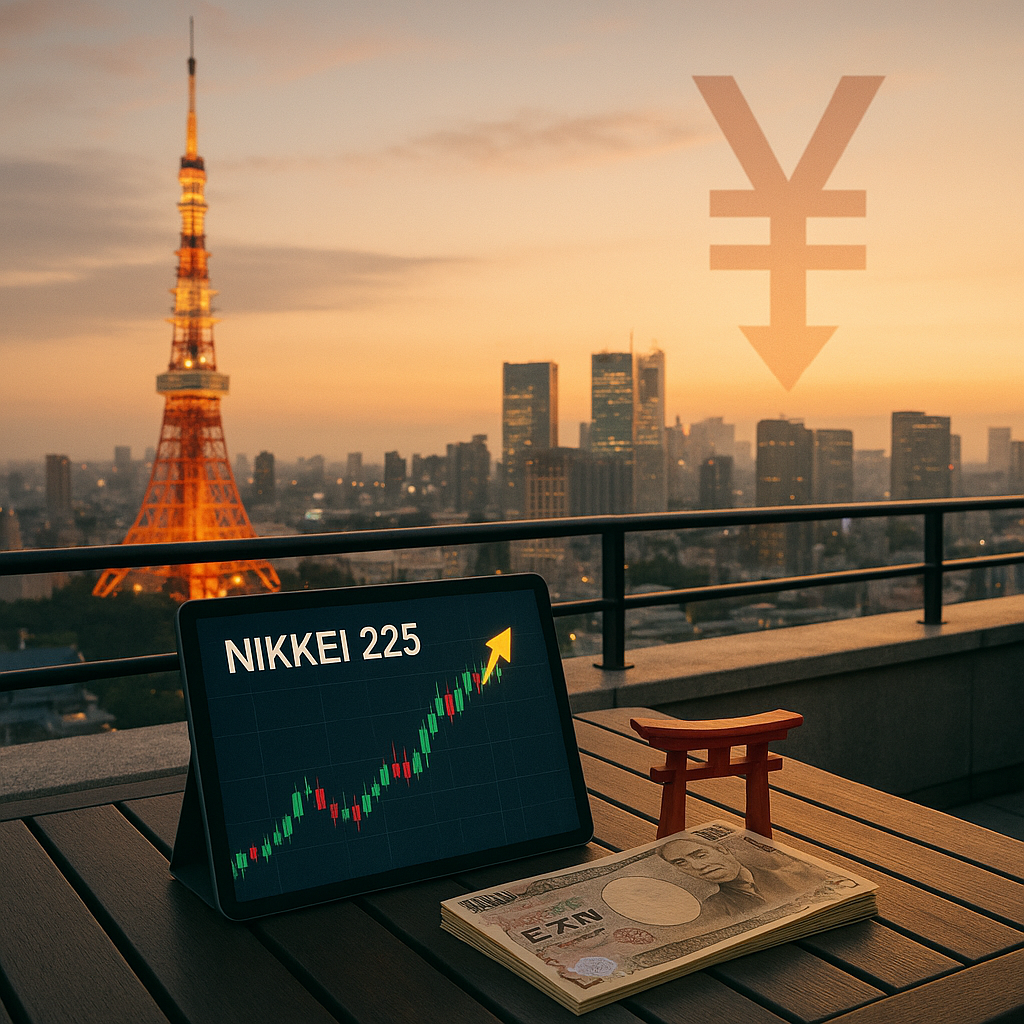The Nikkei 225 has reached unprecedented heights in July 2025, marking a 40-year high driven by weak yen tailwinds and robust export earnings. This explainer dives into the factors behind this milestone, explores its implications for investors, and highlights key trends shaping Japan’s financial markets.

The Nikkei 225 Breakthrough: A Historical Milestone
The Nikkei 225 crossed its historical peak in late February 2024, reaching an all-time high of 42,224 on July 12 [Source 1]. This achievement underscores the index’s resilience amid global economic uncertainties. The weak yen has been a significant driver of this success, as it boosted export earnings and made Japanese goods more competitive internationally.
Tokyo Stock Exchange Outlook: Strong Earnings and Export Growth
Japan’s export boom in 2025 has been a key factor in the Nikkei 225’s upward trajectory. Companies like Toyota Motor and Sony have reported strong performances, with Toyota’s shares rising steadily through July [Source 2]. The Nikkei 225 is heavily influenced by these large-cap companies, which dominate sectors such as automotive, technology, and finance.
BOJ Policy Shift: Impact on Market Volatility
The Bank of Japan (BOJ)’s unexpected hawkish monetary policy shift in August 2024 caused significant market volatility [Source 1]. The Nikkei 225 experienced sharp declines, with a 12.4% drop on August 5—a record single-day retreat since Black Monday in 1987. However, the index has since recovered, reflecting investor confidence in Japan’s long-term economic prospects.
Weak Yen: A Double-Edged Sword
While the weak yen has bolstered exports and corporate earnings, it has also increased import costs for Japan [Source 3]. The Nikkei 225’s performance reflects this dual impact, as sectors reliant on domestic consumption have seen mixed results. Despite these challenges, the overall trend remains positive, driven by a combination of structural reforms and favorable external conditions.
FAQ: Key Questions About the Nikkei 225 in 2025
Is the Nikkei 225 still undervalued compared to historical standards?
Yes, while it has reached all-time highs, the index remains attractive due to strong corporate earnings and a weak yen environment.
How have Japan’s export earnings influenced the Nikkei 225 in recent months?
Export growth has been a key driver of the index’s performance, particularly for companies in sectors like automotive and technology.
What role does BOJ policy play in shaping Nikkei 225 trends?
The BOJ’s monetary policy directly impacts market volatility and investor sentiment, as seen in August 2024’s sharp sell-off.
Are investors confident about Japan’s long-term economic outlook?
Yes, structural reforms and a weak yen have bolstered confidence, with many expecting sustained growth in 2025 and beyond.